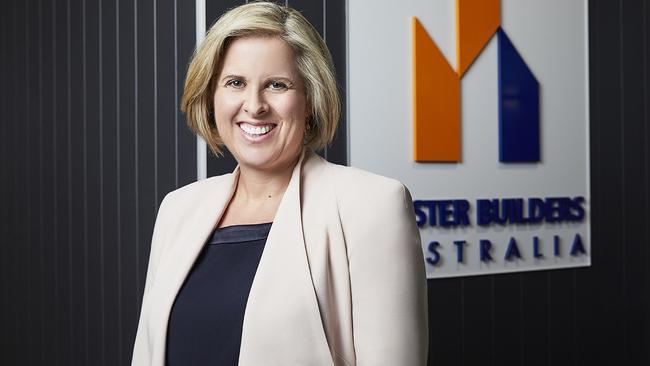Building industry; gender imbalance, bias towards uni a barrier to workforce
A bias towards unis over vocational training is driving a gender imbalance that is leading to a crippling skills shortage in the sector.

Master Builders Australia says a bias towards universities over vocational education and training is one driver of the gender imbalance in the construction industry, contributing to a crippling skills shortage in the sector.
MBA chief executive Denita Wawn said more women needed to join the building industry, declaring the assumption that only men, or 50 per cent of the potential workforce, need apply had acted as a barrier to recruiting an estimated 500,000 workers in the coming years.
The construction industry peak body has released a policy platform to increase the number of women working in the sector, and is calling for greater support for working mothers, including more flexible hours and maternity leave and a more inclusive workplace.
Ms Warn also said the nation would not be able to reach its goal to build 1.2 million new homes in five years if more women didn’t join the construction industry, with women making up 15 per cent of the industry’s workforce and 3 per cent of tradies.
She said the bias towards universities rather than trade apprenticeships began in schools, and had been compounded by a drive that began in the 1970s to get more people into higher study.
“It’s exceptionally frustrating, and it’s not even just for females – it’s a bias towards higher education as opposed to vocational education and training,” Ms Warn said.
“And some schools are exceptionally good at promoting the opportunity for trades, but we do see it more predominantly in boys schools or towards boys than we do women.
“We think that that’s got to simply stop.
“But there are still many schools that are providing limited opportunities for both genders to pursue a career in trade roles and look at vocational education and training as a legitimate pathway or careers.”

MBA figures show that women in the industry are significantly more likely to work part-time, 41 per cent compared with 16 per cent of men, and typically earn less than their male colleagues, with an average pay gap of 14.5 per cent.
Ms Warn said building industry leaders needed to “lead by example” in changing the culture of the sector or else the industry would fail to attract the talent it needed to plug skills gaps.
“There’s no beating around the bush, it is dire,” she said.
Outgoing Jobs and Skills Australia acting commissioner David Turvey said fixing gender imbalance within occupations was key to combating skills shortages.
He said professions with a significantly higher proportion of women or men among its workforce were more likely to face worker shortages, with 54 per cent of occupations where males made up at least 80 per cent of the workforce struggling to fill vacancies.
Mr Turvey said JSA had also found that 40 per cent of occupations where female workers made up at least 80 per cent of the workforce were in shortage, compared with 25 per cent of occupations without any gender skew.




To join the conversation, please log in. Don't have an account? Register
Join the conversation, you are commenting as Logout